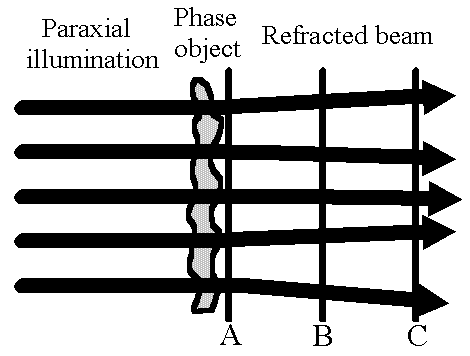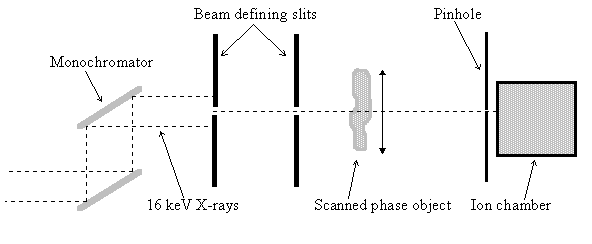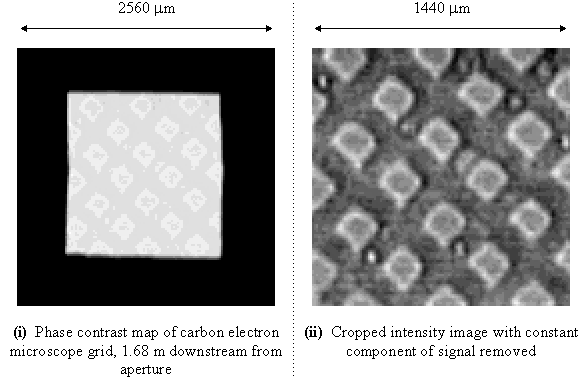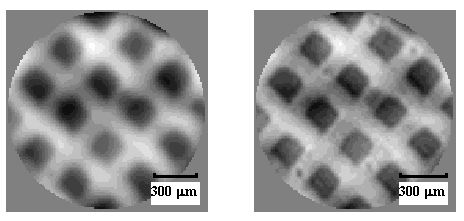|
|
Quantitative phase microscopySchool of Physics
|
|
|
Quantitative phase microscopySchool of Physics
|
Phase retrieval is concerned with extracting the phase of an optical wave field. This is traditionally done using interferometry, however we have developed a technique for extracting phase information from the way in which the intensity evolves as the field propagates.
This work is based on the so-called transport-of-intensity equation (TIE), a partial differential equation which relates the phase of an optical disturbance to its intensity and spatial intensity derivative. Solution of this equation will under certain conditions uniquely determine the phase of an optical wavefield, given measurements of its intensity and intensity derivative over some plane.
We are currently working on applying this to X-ray phase imaging, optical microscopy and adaptive optics.
![]()
The background image is a phase amplitude photograph of a living cell, taken using our phase amplitude microscopy technique. It is reconstructed from intensity measurements without phase contrast or Nomarski DIC optics. Stay tuned for further developments..........
![]()
Our phase retrieval technique is based on the so-called transport-of-intensity equation (TIE), a partial differential equation which relates the phase of an optical disturbance to its intensity and spatial intensity derivative. Solution of this equation will under certain conditions uniquely determine the phase of an optical wavefield, given measurements of its intensity and intensity derivative over some plane.
Below is shown a typical experimental setup for non-interferometric phase measurement based on the TIE :

In this figure, we see a weakly refracting phase object being illuminated by radiation which is "paraxial" - in other words, the energy flow in the diagram is very close to being from left to right. (More precisely, a paraxial wave may be written as a weakly perturbed plane wave.) Measurement of the intensity in the planes marked A,B,C permits determination of both the intensity and intensity derivative over the plane B. For the case of strictly positive intensity over the plane B, we are able to uniquely recover the phase of the wave from our three noninterferometric intensity measurements. This information can then be processed to yield the structure of the phase object illuminated by our paraxial wave.
An experimental demonstration of these ideas was published recently in Physical Review Letters : see K.A.Nugent, T.E.Gureyev, D.Cookson, D.Paganin, and Z.Barnea, "Quantitative phase imaging using hard X-rays", Phys.Rev.Lett. 77, 2961 - 2964. This experiment demonstrated the quantitative phase imaging of a commercial carbon microscope grid, of thickness approximately 70 microns. It was carried out using 16 keV X-rays from the Australian National Beamline Facility at the Photon Factory synchrotron at KEK in Tsukuba, Japan. At this energy and thickness, the carbon grid acted as a pure phase object to an excellent approximation.
A schematic of the experiment is shown below.

The intensity image corresponding to plane C in the first diagram, is shown below. We see that the phase change induced by the carbon grid has induced an intensity change upon propagation. This sort of phenomenon is of course well known : for example, a simple lens bringing light to a focus is inducing intensity changes through phase changes. The analogy with lensing is helpful, for careful examination of the image shows local focusing and defocusing events. Such phase contrast mechanisms have been observed for many years.

The advantage of the present technique is that it is able to take such phase-contrast images and, with processing algorithms based on a numerical solution of the TIE, may deterministically and stably recover the phase struture of the object. The retrieved phase is given below ; the left hand figure gives the retrieved phase, and the right hand figure has been modified with a simple deconvolution procedure to take source-induced blurring into account :

The refractive index profile of the commericial carbon grid is in quantitative agreement with the refractive index profile obtained using independent measurements of the thickness of the carbon grid.
This is only a small facet of the work currently been undertaken in phase retrieval using the TIE.
![]()